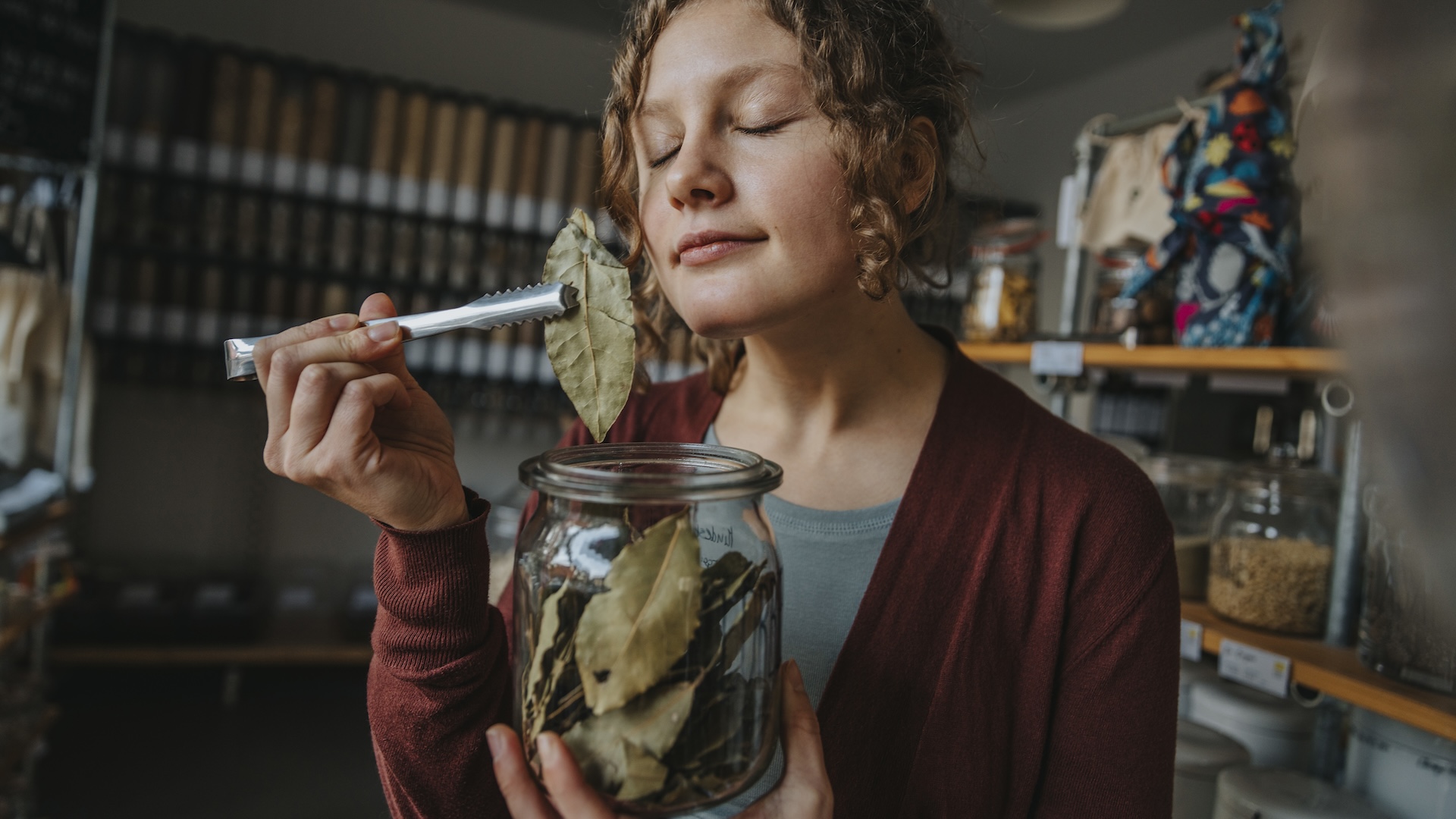
Do bay leaves actually add flavor, or is it all a con?
Some say bay leaves are full of flavor, others call them a fraud.

If a recipe asks you to add a bay leaf, would you listen? The leathery but delicate leaf, which is usually removed before a dish is served, has been a mainstay of Mediterranean cuisine for centuries — but recently some food enthusiasts and chefs have questioned if the herb adds any flavor at all.
Could they be right? The answer depends on a number of factors, including the variety of leaf, how fresh it is and even whether people are able to taste its unique flavors, as research suggests that not everyone can.
What do bay leaves taste like?
Bay leaves come from the bay laurel tree, an evergreen tree native to the Mediterranean region. When they're cooked in a meal such as a stew or soup for an extended period, bay leaves are supposed to impart a strong flavor: a mix of pine, clove, lavender and eucalyptus notes, Charles Spence, a professor of experimental psychology and a gastrophysicist at the University of Oxford, wrote in a 2023 paper on bay leaf taste and history.
Related: Why do people like spicy food?
But the subtle green and bitter flavors that leach from the leaf are difficult even for chefs to describe, and some say it has an indescribable mystique. "My brother, who is a chef, is of this opinion," Spence told Live Science. "He feels the dish misses something without the bay leaf even though he can't articulate exactly what the bay leaf does."
Someone unfamiliar with bay leaf's flavor profile may miss the herb's subtle influence and claim it's done nothing, said Ethan Frisch, co-founder and co-CEO of Burlap and Barrel, a single origin spice company.
On top of that, different varieties of bay leaves have different aromas. The European variety (Laurus nobilis L.) is most commonly available in grocery stores and called for in recipes, Frisch noted. But North America is also home to the native California bay leaf (Umbellularia californica). While the two leaves are similar in shape and aroma, the California bay leaf is "a little more piney and citrusy, compared to the Mediterranean species which has more menthol and eucalyptus," according to Frisch.
Sign up for the Live Science daily newsletter now
Get the world’s most fascinating discoveries delivered straight to your inbox.
Perhaps that's why bay leaves are under more scrutiny in North America. Elsewhere, like in the bay leaf's native Mediterranean region, the herb is still a ubiquitous and unquestioned part of the culinary landscape, Spence said.
Frisch said the bay leaf's reputation has been skewed by a combination of poor quality and lack of familiarity. In the U.S., "most dry bay leafs don't have flavor because they're really old," Frisch told Live Science.
Many bay leaf products have unknown harvest conditions and years-long processing times, he said, adding that they can easily be stale before they're purchased.
Cooks may deem the bay leaf's subtle flavor enhancements a poor pay off compared to more pungent spices, like pepper or garlic. They opt to skip or replace it, perpetuating the idea that it doesn't do anything since their dish may still seem fine afterward.
The bay leaf controversy may also be driven by a genetic factor. The volatile compound 1,8-cineole is the most common essential oil in the bay leaf, giving it a medicinal aroma that is somewhat minty, like Vicks VapoRub. A 1981 study in 85 participants found that one-third were unable to taste the 1,8-cineole. It's unknown if the inability to taste bay leaf is genetic, as it likely is with people who think cilantro tastes like soap. This selective anosmia for bay leaves could also help explain why a cohort of people call the herb tasteless, Spence said.
How to use bay leaves correctly
Experts say there are some best practices to make sure you're maximizing the bay leaf effect. Frisch recommends starting with high-quality leaves. Look for brighter green leaves with obvious veins running from the stem through the leaf, and avoid leaves that are grey, brown or have withered stems, as these are signs that the herb has passed its prime.
Whole bay leaves work best for dishes with long cook times, such as soups, stews or braises. Be sure to add the leaf early in the process, allowing it time to release its essential oils. And since most of the volatile compounds in bay leaves aren't water soluble, you'll have the best luck cooking the bay leaf in an oil or fatty base like bechamel, Spence said.
However, for quicker meals, Frisch prefers ground bay leaf. The ground version has more surface area and releases the flavors faster, removing the need for long cook times. And there's no need to remember to take it out at the end of cooking, like cooks have to do with whole leaves. Plus, it can be easier to cook with the ground bay leaf because it's easier to smell the different flavor notes, he said.
But if you don't have quality bay leaves on hand, that's fine. There are some easy substitutes. Frisch recommends using rosemary, thyme or oregano, which have similar herbal notes.

Donavyn Coffey is a Kentucky-based health and environment journalist reporting on healthcare, food systems and anything you can CRISPR. Her work has appeared in Scientific American, Wired UK, Popular Science and Youth Today, among others. Donavyn was a Fulbright Fellow to Denmark where she studied molecular nutrition and food policy. She holds a bachelor's degree in biotechnology from the University of Kentucky and master's degrees in food technology from Aarhus University and journalism from New York University.









